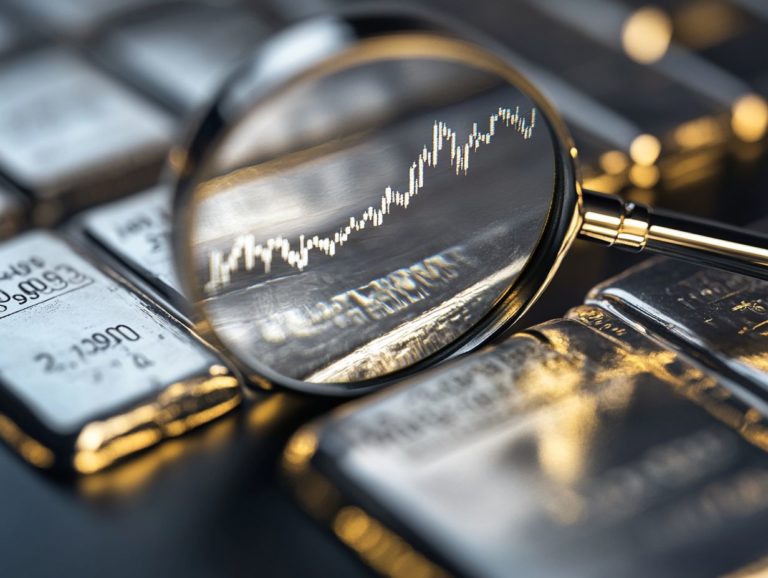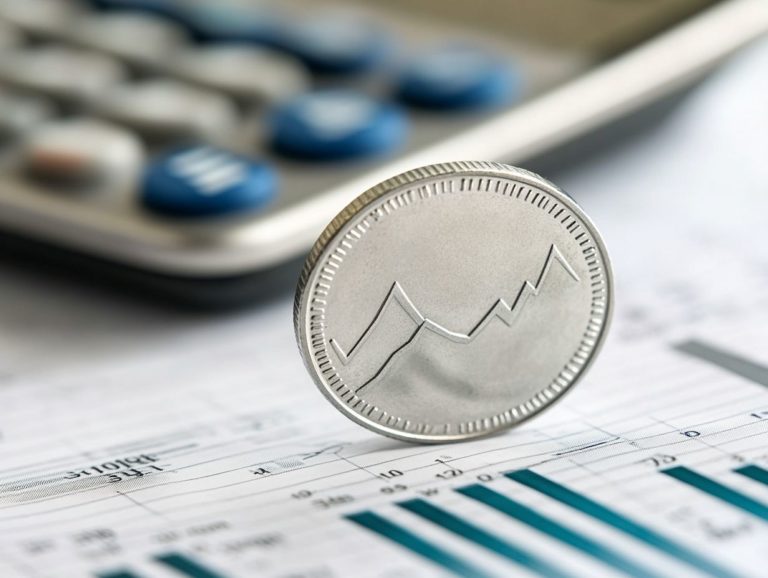Analyzing the Seasonality of Silver Prices
Silver, a precious metal celebrated for its allure and industrial uses, has drawn investors’ attention for centuries.
Knowing silver prices can make or break your investment strategy! Grasping the complexities of silver prices is vital for anyone considering investing or trading in this commodity. This article delves into the various factors that influence silver prices, including seasonal patterns and historical trends.
It also uncovers the reasons behind these seasonal fluctuations and presents effective strategies for investment. Lastly, it offers insights into future price movements, empowering you to navigate the silver market with confidence.
Contents
- Key Takeaways:
- Understanding Silver Prices
- Seasonal Patterns in Silver Prices
- Causes of Seasonal Patterns
- Strategies for Investing in Silver
- Forecasting Future Trends
- Frequently Asked Questions
- What is the seasonality of silver prices?
- Why is it important to analyze the seasonality of silver prices?
- What factors influence the seasonality of silver prices?
- Curious when silver prices peak? Here’s what you need to know!
- When is silver typically less expensive?
- How can I use the seasonality of silver prices to my advantage?
Key Takeaways:
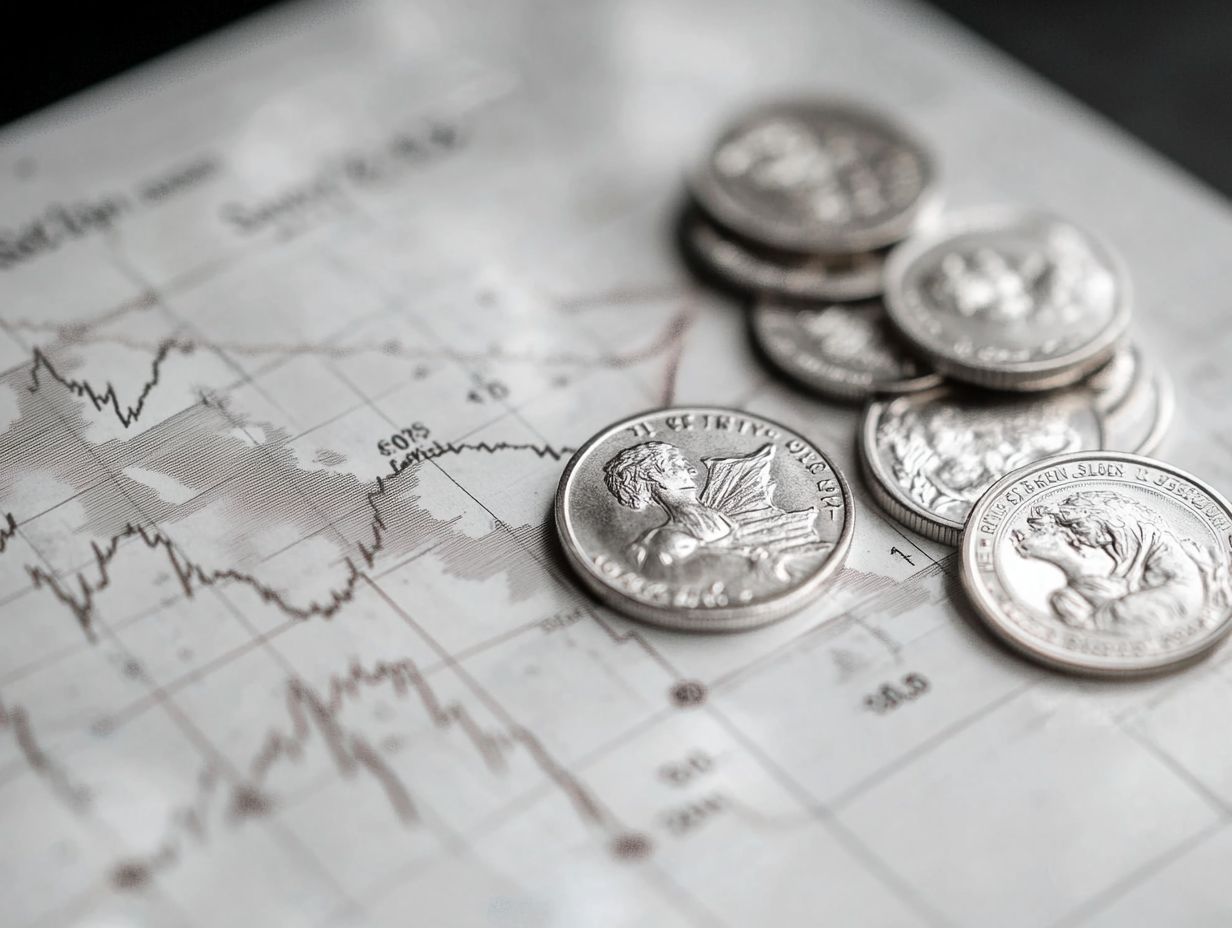
- Seasonality plays a significant role in silver price fluctuations.
- Supply and demand dynamics heavily influence these seasonal patterns.
- Analyzing seasonal trends helps you make informed decisions and forecast future movements.
Understanding Silver Prices
Understanding silver prices is essential for you as an investor or trader aiming to navigate the complexities of the silver market. This precious metal has been a reliable investment choice, thanks to its industrial applications and its role as a safe haven during economic uncertainty.
You should also know about the performance metrics of companies like Fresnillo plc and Pan American Silver, which will offer you invaluable insights into market dynamics. Knowing various factors like market demand and seasonal trends is crucial for navigating the silver market.
When analyzing silver prices, consider various factors, including financial indicators, which are economic signs that show how well the economy is doing, as they can significantly impact your gains and losses.
Factors Affecting Silver Prices
Several key factors influence silver prices, including industrial demand, global economic conditions, and prevailing market trends.
It’s important to understand these elements to grasp market fluctuations. Industrial demand for silver holds particular significance due to its extensive use in sectors like electronics, solar energy, and photography. An increase in usage within these industries can push prices higher.
Global economic conditions including inflation rates and currency strength often act as indicators that shape investor sentiment and buying behavior. For instance, positive economic signals may enhance investor confidence, while economic downturns might spark a greater interest in silver as a safe haven.
Moreover, statistical data such as production levels and reserve estimates can offer valuable insights, potentially signaling shifts in market trends before they occur.
Seasonal Patterns in Silver Prices
Seasonal patterns in silver prices are crucial for you as a trader or investor, as they can unveil potential buying or selling opportunities throughout the year. By analyzing historical trends, you ll notice that silver frequently experiences fluctuations in specific months, influenced by diverse market factors, such as the wedding season demand in India and industrial usage in China.
Understanding these cycles helps you create winning trading strategies, maximizing your investments while mitigating risks tied to market volatility. Accessing reports and data on these trends can offer you valuable insights for making well-informed investment decisions.
Historical Trends and Analysis
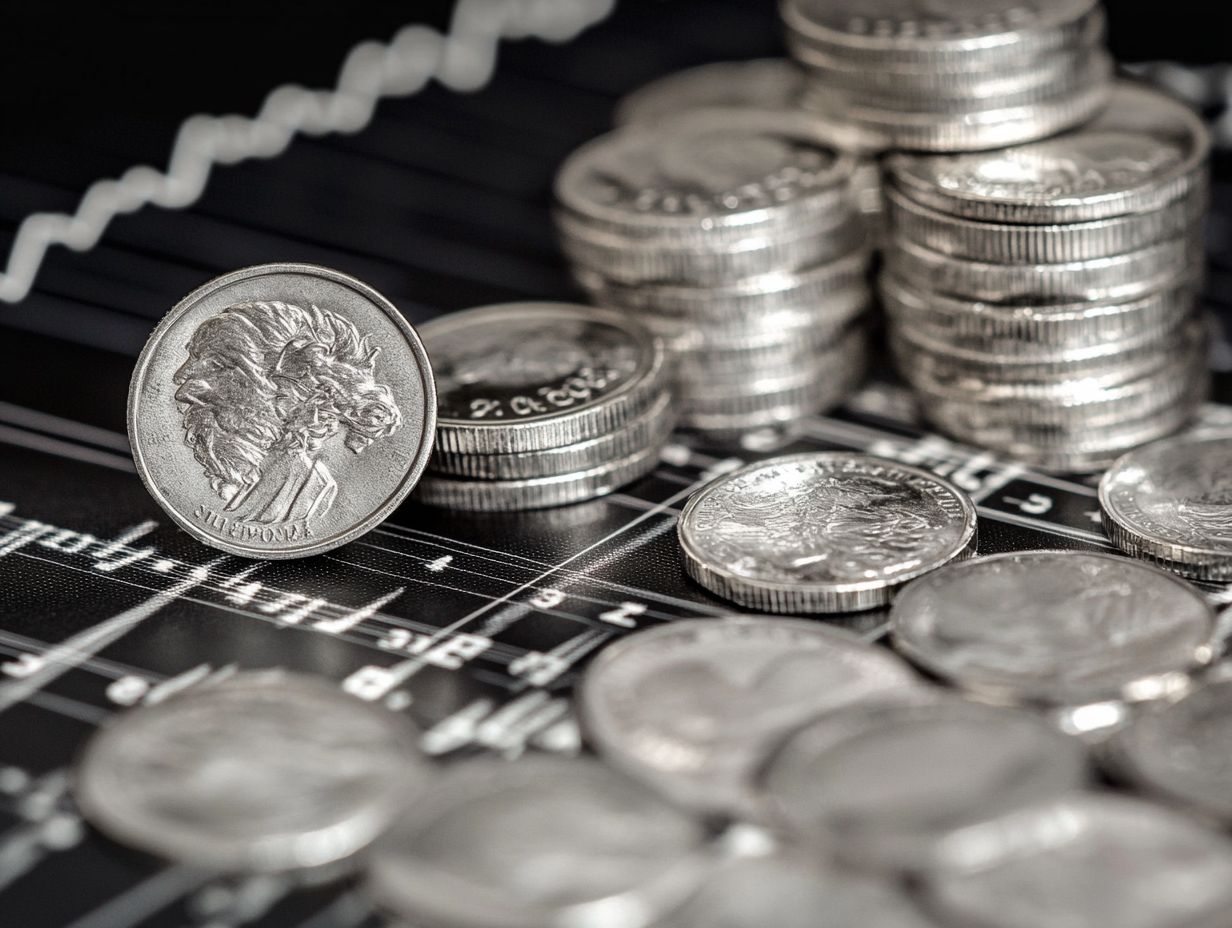
Historical trends in silver prices give you valuable insights into market behavior and future performance.
By examining significant events like economic downturns and geopolitical tensions, you see how these factors influence pricing patterns. For instance, during the 2008 financial crisis, silver prices surged nearly 50% in 2009, showcasing its role as a safe-haven asset.
When looking at monthly and yearly price averages, you ll notice consistent peaks during times of high inflation. These trends present opportunities for traders to capitalize on market movements.
Causes of Seasonal Patterns
Seasonal patterns in silver prices are shaped by a blend of supply and demand factors. Events like harvest times, wedding seasons, and industrial cycles contribute significantly to market fluctuations.
For example, increased demand during wedding seasons in India can lead to price spikes. Similarly, shifts in industrial demand from countries like China also play a crucial role.
Understanding these factors helps you refine your trading strategies and seize opportunities driven by seasonal trends.
Exploring the Impact of Supply and Demand
The relationship between supply and demand is key to silver pricing. This dynamic is influenced by factors such as mining output, which can fluctuate based on operational changes.
Geopolitical events significantly affect prices. For example, political stability in mining regions can boost production, while unrest disrupts supply chains.
As you explore these dynamics, you ll find that market analysts use trading strategies to exploit perceived imbalances.
Strategies for Investing in Silver
Investing in silver requires effective strategies to maximize gains and minimize risks. It’s essential to understand market dynamics, including price trends and key economic indicators.
Using techniques like dollar-cost averaging and diligent monitoring of financial reports can enhance your investment outcomes. Keep an eye on companies like Hecla Mining and Coeur D Alene for valuable insights.
Maximizing Gains and Minimizing Risks
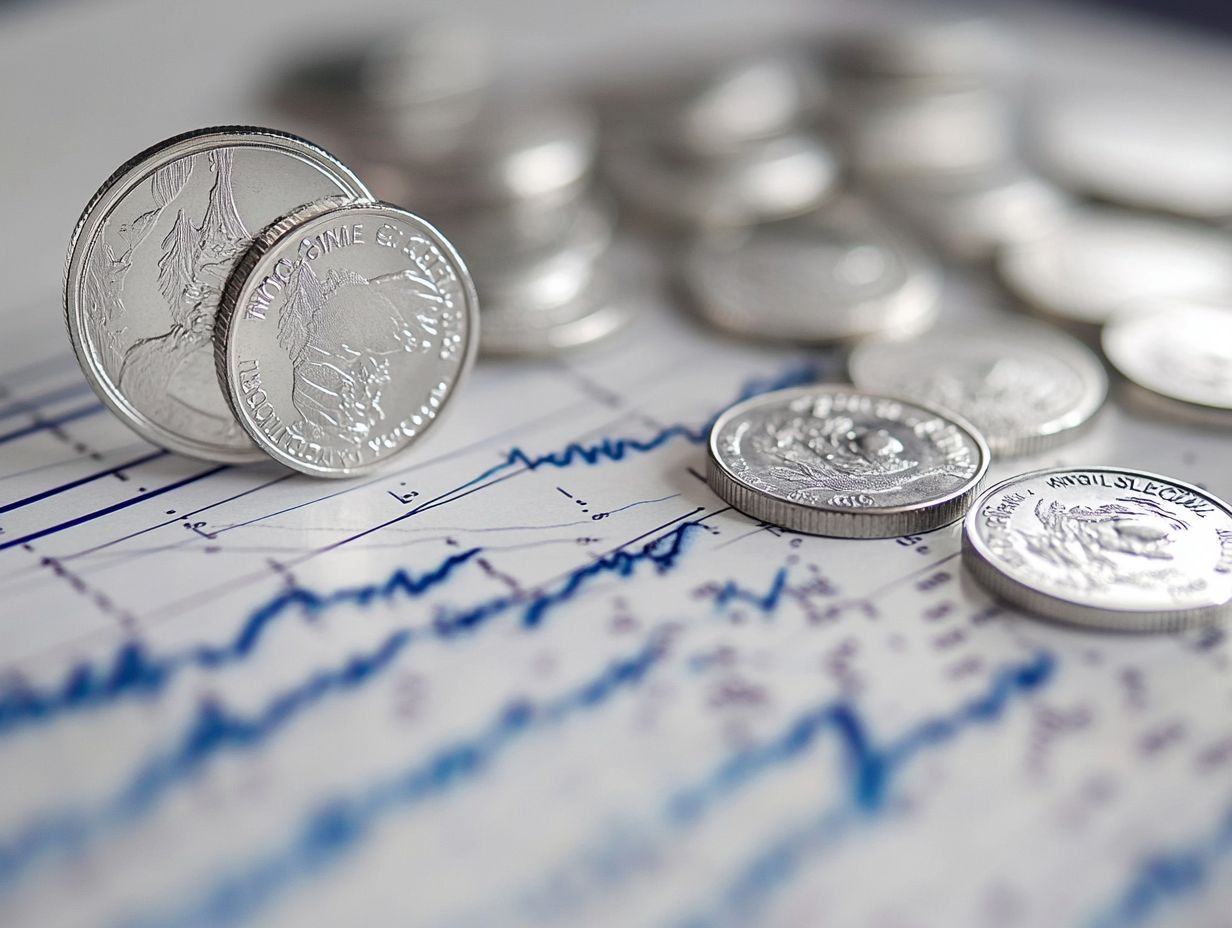
Maximizing gains while minimizing risks is crucial in silver investing. A strategic approach to market analysis is necessary.
To achieve this balance, track historical volatility and its correlation with broader market trends. Dollar-cost averaging can act as a safety net against fluctuations.
By monitoring geopolitical events and economic indicators, you gain insights into silver’s market behavior, helping you navigate potential risks confidently.
Forecasting Future Trends
Forecasting future trends in silver prices requires analyzing various indicators. These include historical data and seasonal patterns.
By leveraging market analysis tools and resources like Bloomberg and Seasonax, you can gain valuable insights into potential price movements. Recognizing the cyclical nature of silver, along with insights from financial reports, which detail a company’s financial performance, enables you to make well-informed predictions about future price dynamics, especially considering the impact of inflation on silver prices.
This strategic approach helps you identify great investment options and reduces risks associated with market volatility.
Using Seasonality to Predict Silver Prices
Harnessing seasonality gives you a powerful advantage in the silver market! By analyzing historical price movements throughout specific seasons, you can uncover patterns that tend to recur.
This paves the way for well-informed predictions about future price fluctuations. For example, many market analysts observe that demand for silver often spikes during certain holidays, directly impacting its value.
Grasping these seasonal trends is essential. It enables you to conduct a thorough market analysis that considers not only past performance but also current economic indicators.
Both seasoned and novice investors can harness this insight to make more informed decisions in the dynamic world of silver trading.
Frequently Asked Questions
What is the seasonality of silver prices?
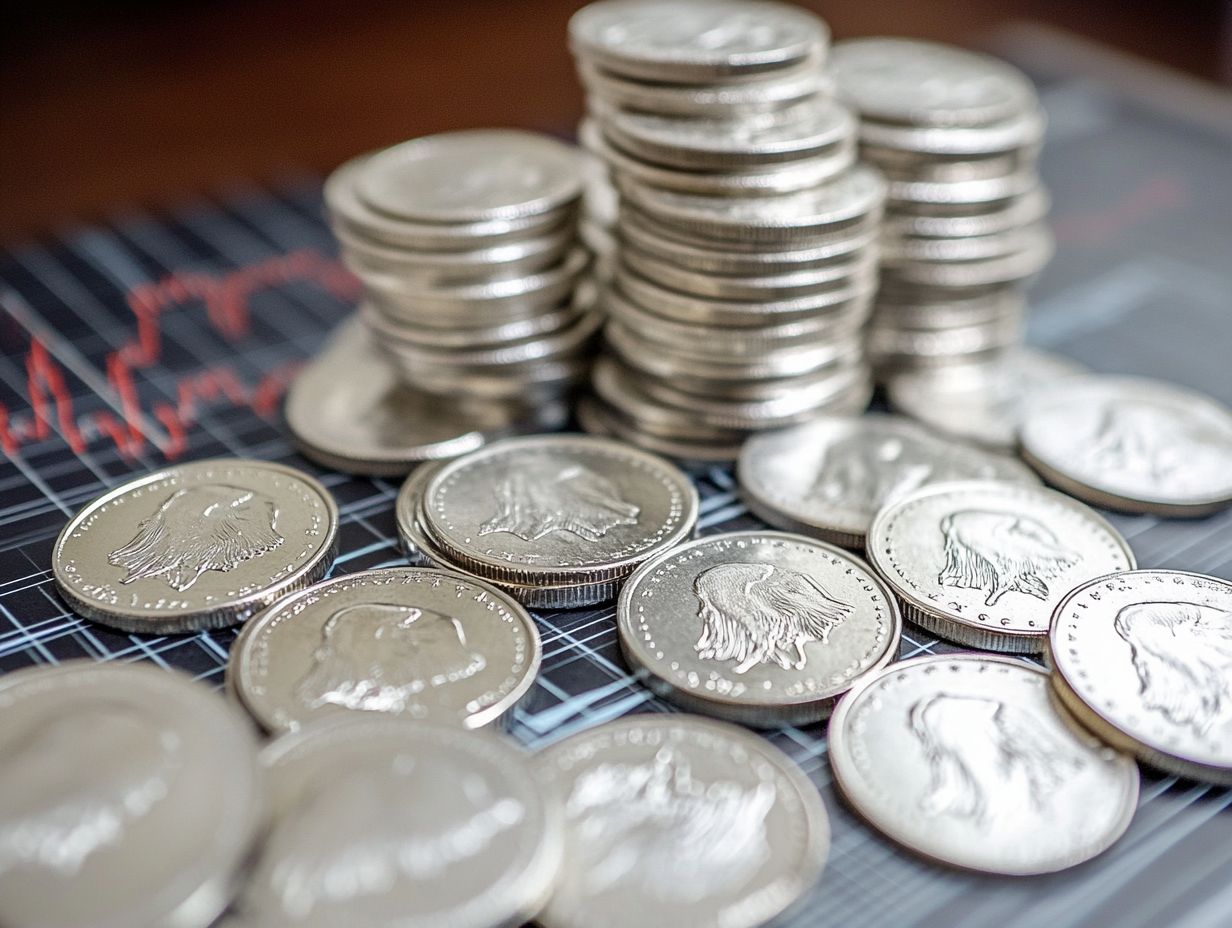
Understanding the seasonality of silver prices is crucial! It reveals consistent patterns throughout the year.
Why is it important to analyze the seasonality of silver prices?
Analyzing the seasonality of silver prices can provide valuable insights. It helps predict future trends in the price of silver, which can be useful for investors and traders.
What factors influence the seasonality of silver prices?
The seasonality of silver prices can be influenced by various factors such as supply and demand, economic conditions, global events, and market sentiment.
Curious when silver prices peak? Here’s what you need to know!
Silver prices tend to be higher during the winter months, specifically from November to February, due to increased demand for jewelry and holiday gifts.
When is silver typically less expensive?
Silver prices tend to be lower during the summer months, particularly from June to August. This is because demand for jewelry and gifts decreases while mining activity increases.
How can I use the seasonality of silver prices to my advantage?
Capitalize on the seasonality of silver prices now to boost your investment strategy! By understanding these trends, you can make more informed investment decisions and potentially maximize profits by buying and selling at the most opportune times.










